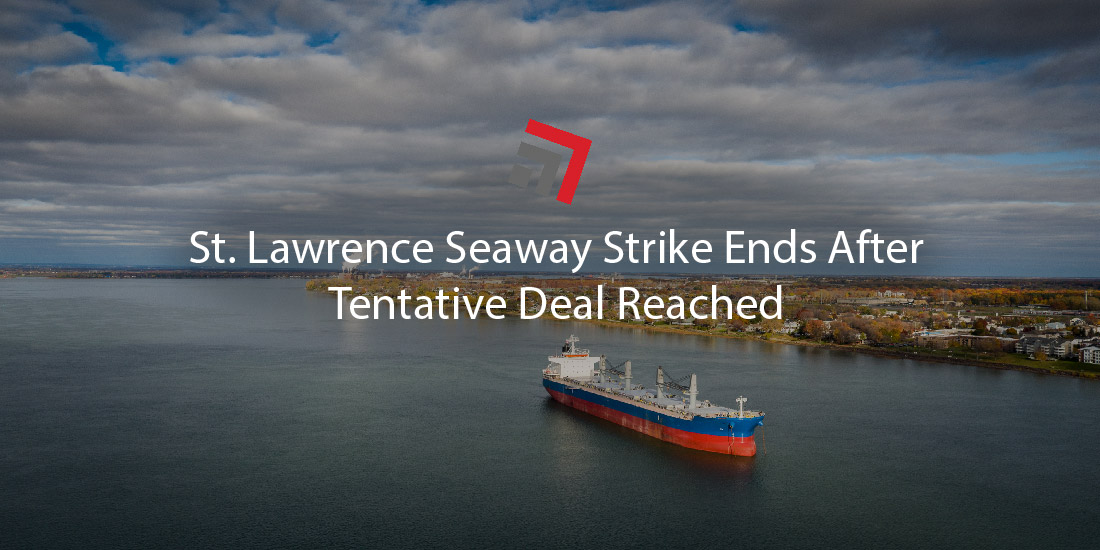A weeklong labor strike along the St. Lawrence Seaway has ended after a deal was reached this past Sunday. The critical waterway resumed ship traffic on Monday as employees returned to work. However, the stoppage was long enough to cause disruptions.
The St. Lawrence Seaway is an expansive system of locks, canals, and channels on the St. Lawrence River. This system permits vessels to travel between the Great Lakes and the Atlantic Ocean.
The impressive trade route, which carried over $12 billion worth of cargo in 2022, stretches more than 2,300 miles from the ocean to the western end of Lake Superior in Minnesota and Wisconsin.
Without an operational seaway, oceangoing ships are not able to access key ports, like Lake Superior’s Duluth or Lake Erie’s Cleveland.
Such was the case last week as the strike shut down 13 locks between Lake Erie and Montreal, backing up ships in the Great Lakes and preventing more ships from coming in.
Weeklong strike pauses trade, causes ship congestion on the Great Lakes
On October 22, some 360 Canadian workers with Unifor, Canada’s largest private-sector union, walked out as a labor-related action over wage disputes with their employer St. Lawrence Seaway Management Corp.
A strike of this magnitude hasn’t occurred on the St. Lawrence Seaway since 1968. The Chamber of Marine Commerce estimated that $100 million per day in economic activity was lost across the U.S. and Canada.
The timing of this disruption couldn’t have been worse either. Grain export demand is in full swing as shippers look to sendoff their yields from North America’s harvest season to overseas buyers.
Shipments of bulk commodities, like grain, salt, and iron ore, were not being moved. This strain on trade was so dire that the Canadian government stepped in and assigned a federal mediator to oversee the stalling negotiations between the seaway’s management and Unifor.
Ship backlogs could be seen at several points along the transport system, including the Lake Ontario and Lake Erie entrances and Ontario’s Welland Canal. One of the anchored vessels was even a U.S. Navy warship.
Other castaways included five grain-hauling ships held up at Ontario’s Port of Thunder Bay on Lake Superior.
A tentative agreement, members still need to ratify deal
This deteriorated state of trade will hopefully improve in the coming days with the strike concluded and a deal reached. However, stakeholders are likely cautiously optimistic.
“We have in hand an agreement that’s fair for workers and secures a strong and stable future for the seaway,” St. Lawrence Seaway Management CEO Terence Bowles said in a statement, referring to the employer-operator’s tentative deal with Unifor.
The agreement still needs to be ratified by the union’s rank-and-file members—hence, tentative.
“Details of the tentative agreement will first be shared with members and will be made public once an agreement is ratified,” a Unifor statement read. The union went on to state that a ratification vote will be scheduled in the coming days.
In what may first appear as a simple formality, the ratification vote is by no means a victory lap. The union’s members reserve the right to reject the proposed deal by way of popular vote.
This past summer, Western Canada dockworkers rescinded an original, tentative, agreement, prolonging negotiations and a strike threat for another two weeks.
Last year, U.S. rail workers from four unions also practiced this right and rejected a tentative nationwide labor contract. Their actions ultimately led to executive intervention by President Joe Biden.
Though, every labor situation is unique. In the meantime, seaway workers are back on the clock—serving as crucial stewards to return stable cargo movement back to the Great Lakes and St. Lawrence River.
Final Thoughts
Please contact us if you have any questions regarding this topic or any others in domestic logistics. In addition, stay up to date with weekly headlines from both trucking and rail via our Road Map newsletter.
More blogs similar to this:



Recent Comments